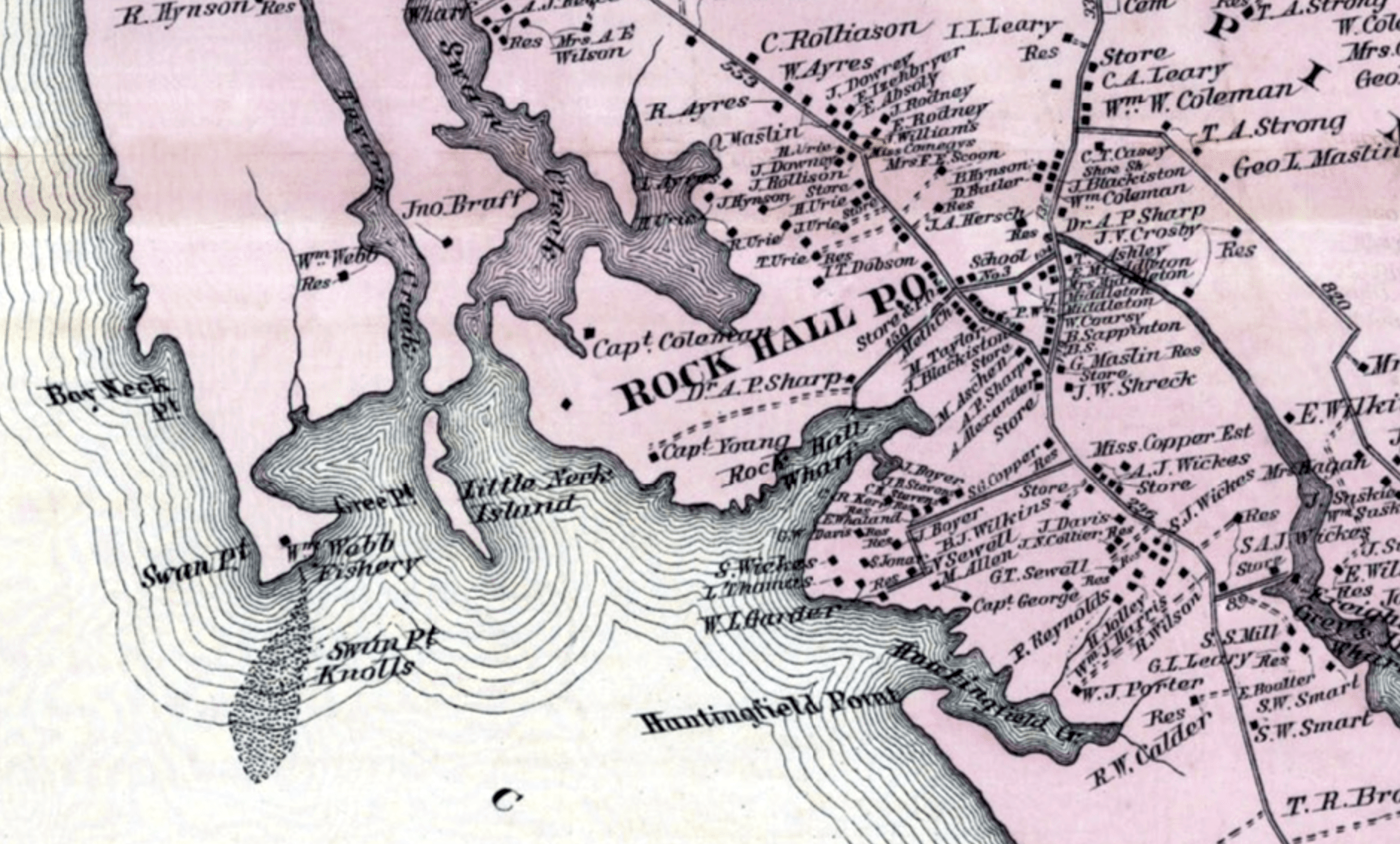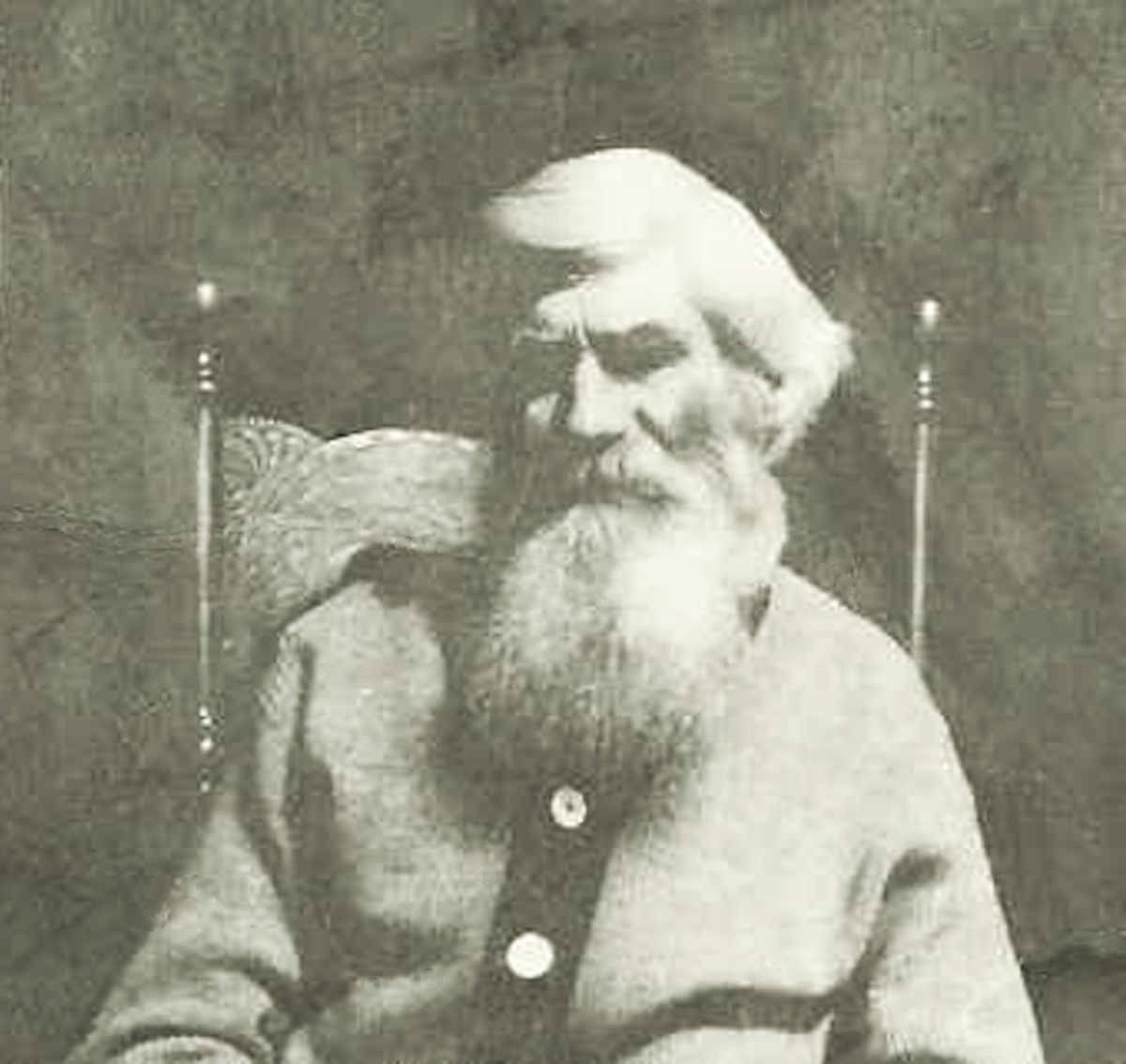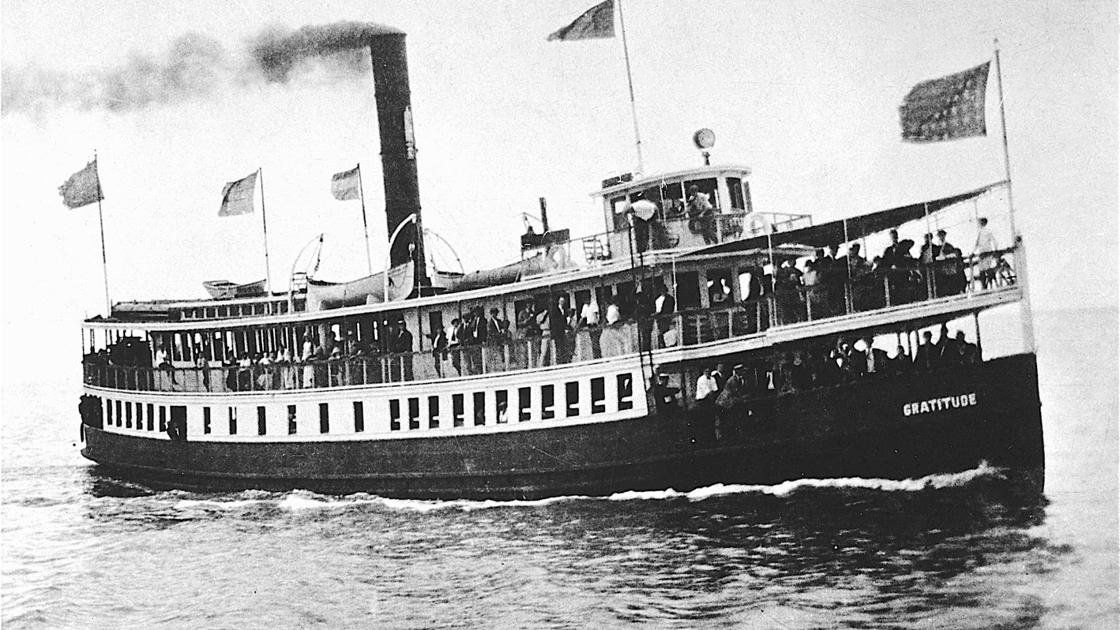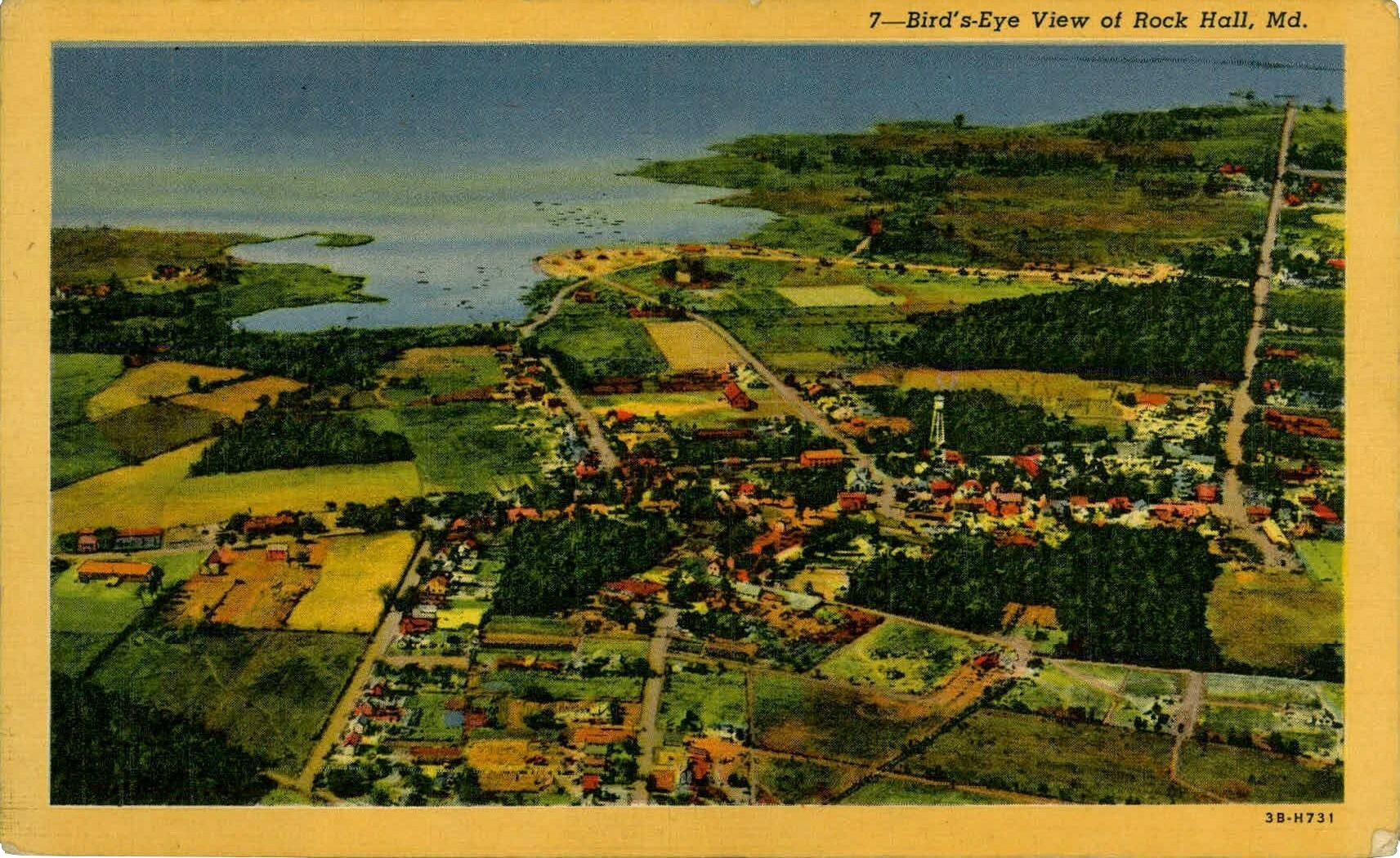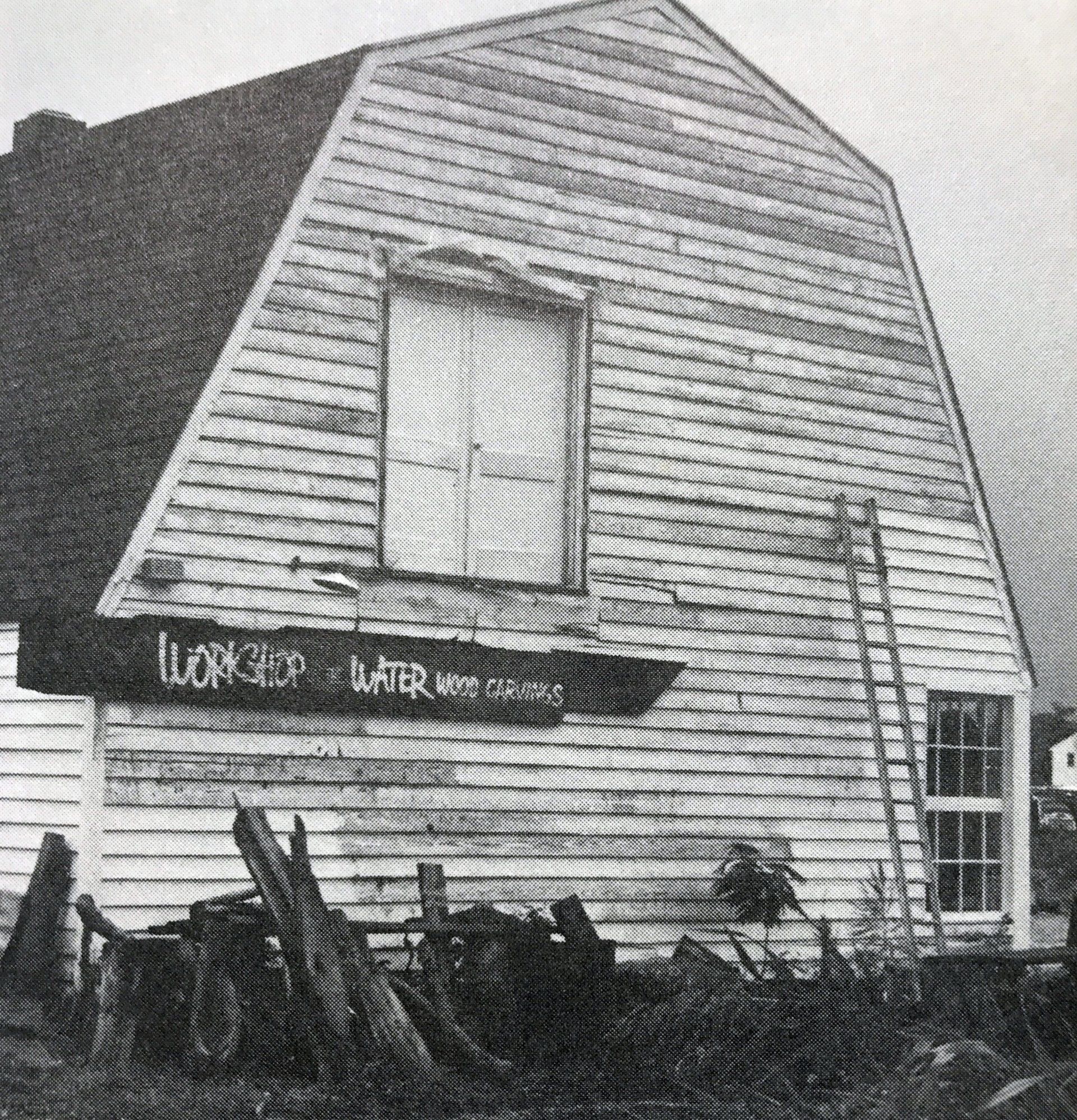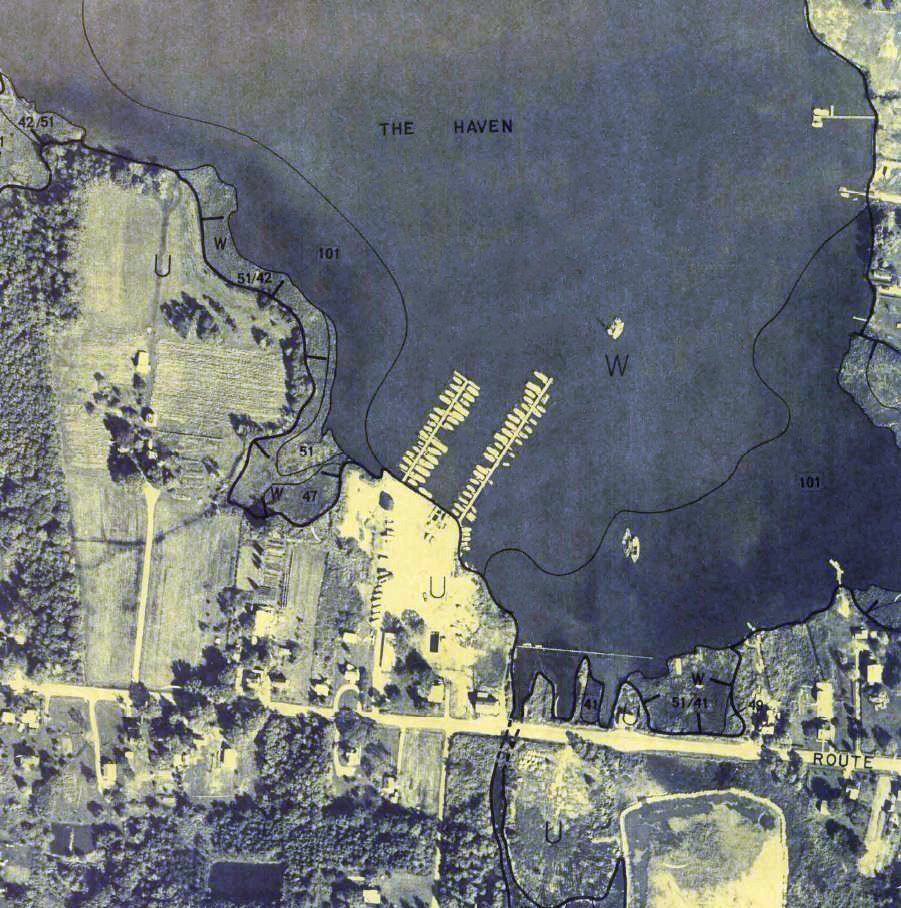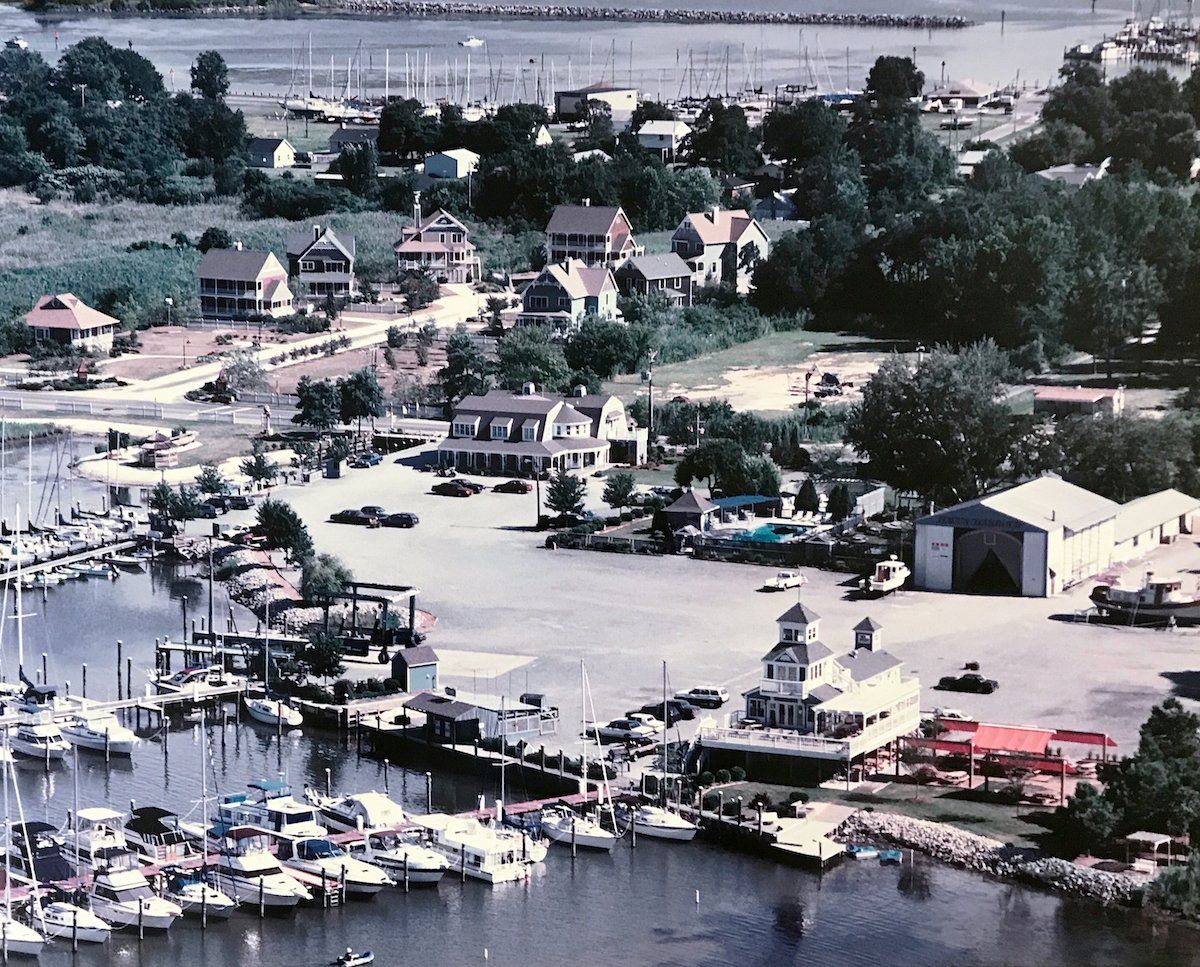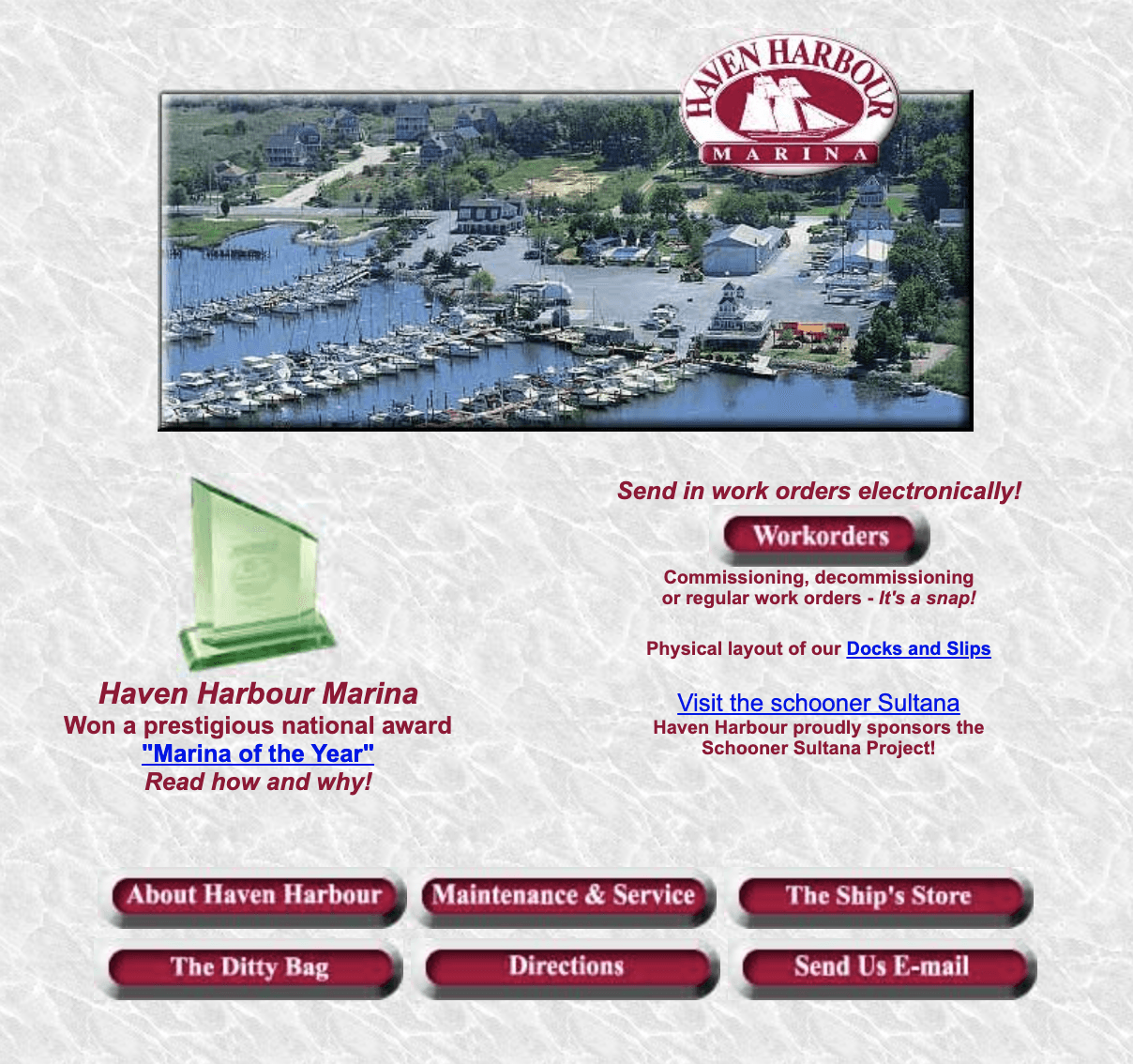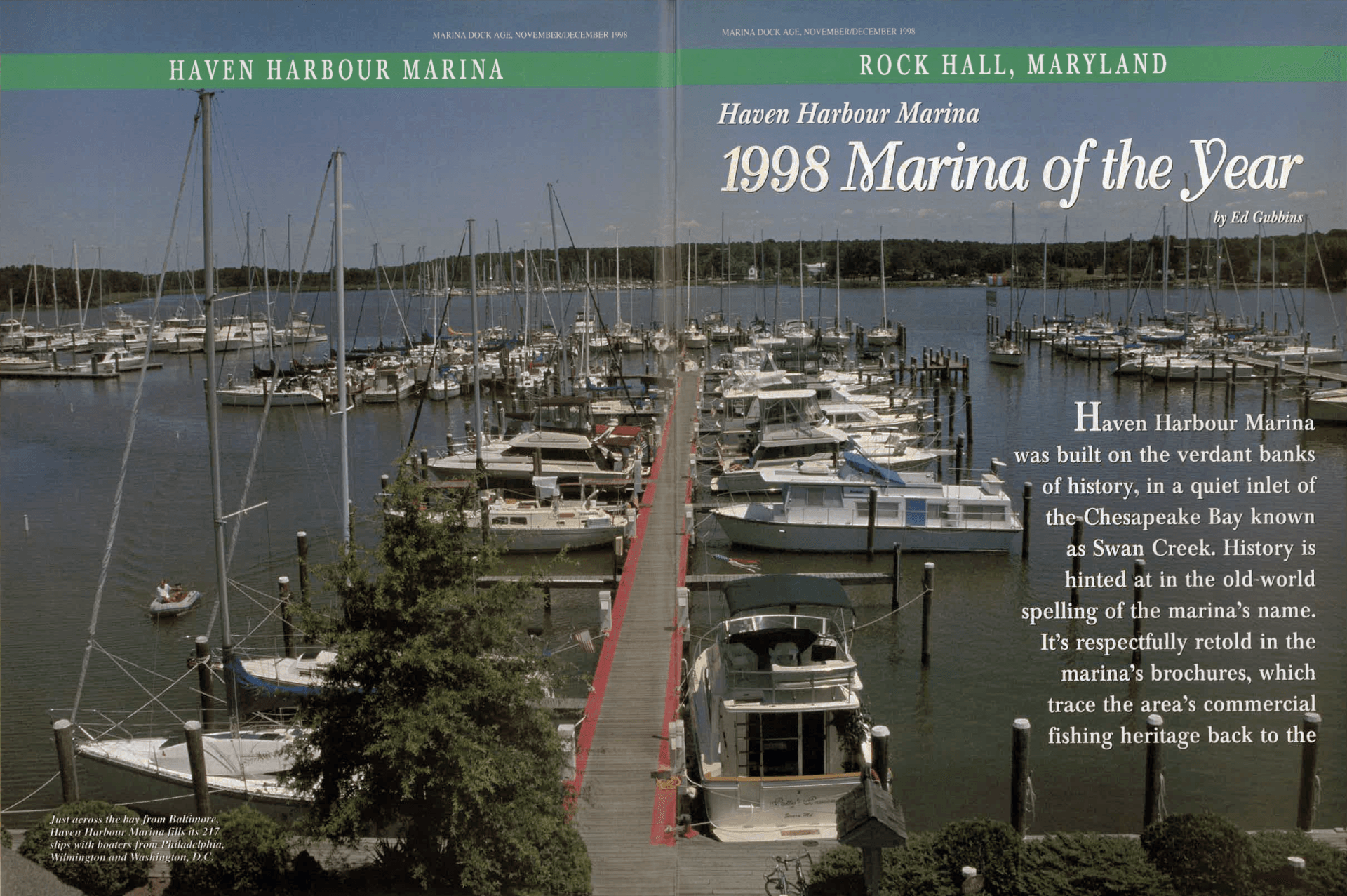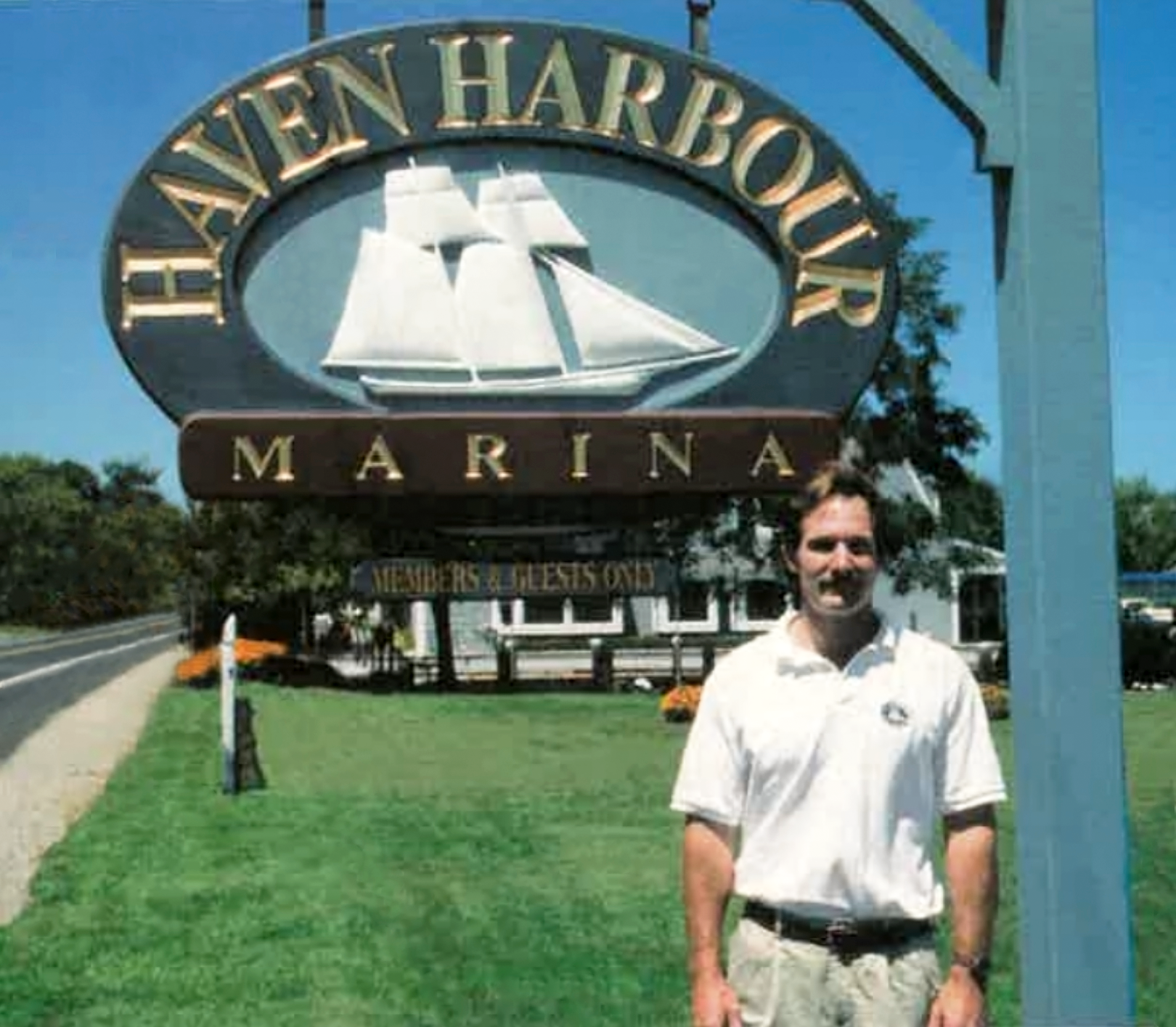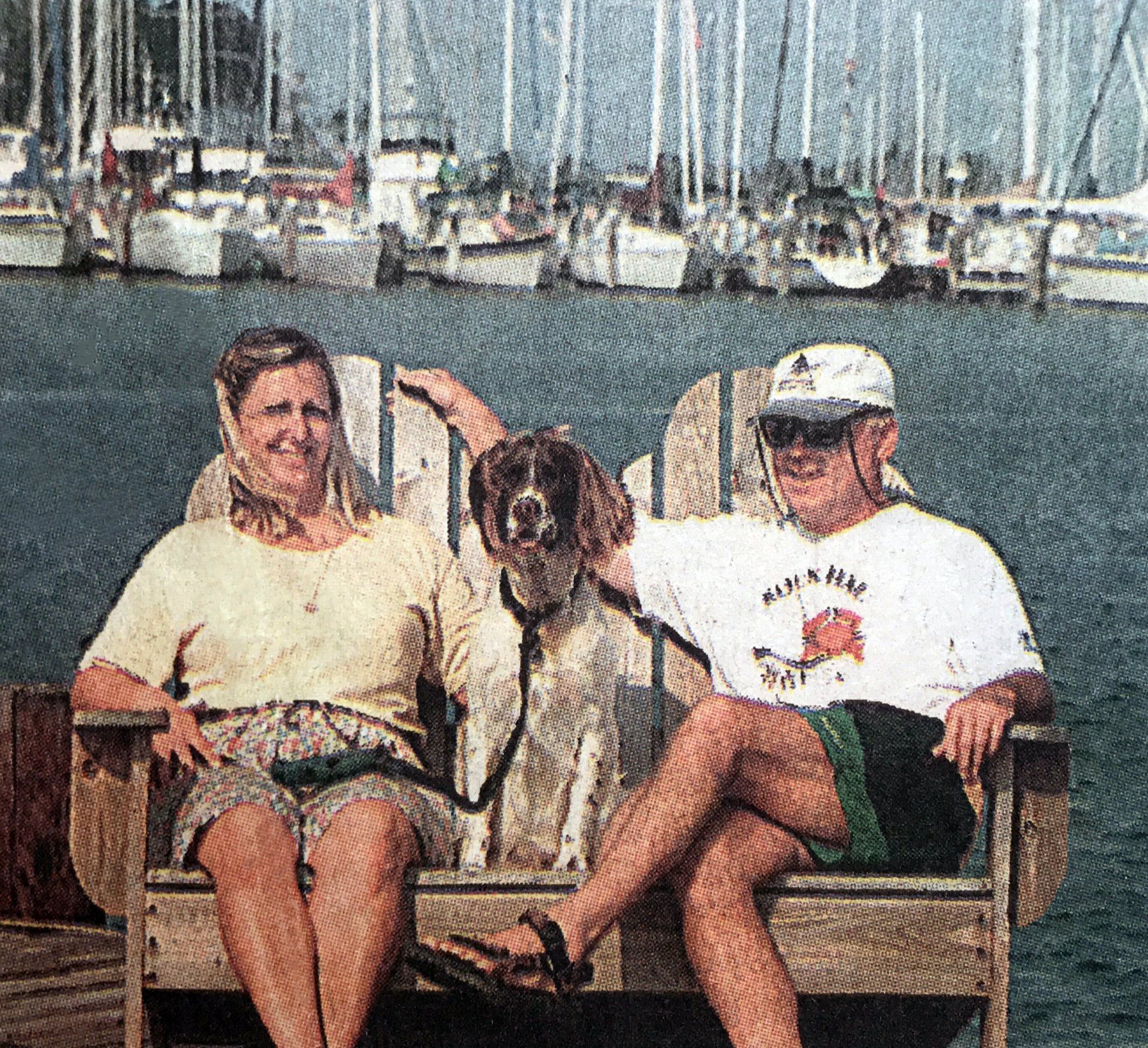“Heaven and earth never agreed better to frame a place for man’s habitation,” wrote Captain John Smith about the Eastern Shore, as he explored the Chesapeake Bay and its inlets in 1608, declaring the area “fit for harbor and habitation.”
Ours is a company history that cannot be told without a brief story of our town — its people, places and events that have made, over many years, the "Pearl of the Chesapeake" what is loved and cherished by so many today. Though small, the town of Rock Hall, Maryland and its surrounding areas lend a rich and colorful history.
Portions of Rock Hall proper once belonged to a Sir Thomas Hynson, who arrived from England in 1659 after receiving a land grant of 2,200 acres from the Calvert family. Hynson was named high sheriff of Kent County and built his home Hinchingham on the banks of the Chesapeake Bay just north of town. His estate's name is presumably derived from “Hynsonham,” meaning "his surrounding acreage and village." The area of Swan Creek known today as The Haven or Haven Creek are shortened versions of the waterway's original designation as “Hynson’s Haven."
1877 Illustrated Atlas of Kent and Queen Anne's Counties depicting portions of "Rock Hall P.O.".
The 1877 Illustrated Atlas of Kent and Queen Anne’s Counties indicates that the property owner of the lands around Swan Creek and Hynson’s Haven, including the present-day Haven Harbour properties, belonged to Captain Samuel E. Coleman. The schooners Bonita and Sarah Elizabeth, owned by Coleman, are presumed to have moored in Hynson’s Haven just off the present-day Haven Harbour Marina basin.
Captain Samuel E. Coleman, early owner of the present-day Haven Harbour properties.
At this time, the Chester River Steamship Company was still landing and departing from nearby Grays Inn, finding it difficult to compete with the new operations of the Enterprise Steamer Company at Rock Hall Harbor. The decision was made by the Chester River Steamship Company to purchase property just outside of Rock Hall at a wharf on the entrance to Swan Creek. In 1887, the steamship
Gratitude made her first voyage to this landing, with the area and main road to and from quickly adopting her name.
What is Rock Hall Avenue today was then Gratitude Road, running through areas that were not yet incorporated by the town. Although primitive and narrow, this thoroughfare became one of the most important heavily traveled in the community — carrying significant passenger, livestock, seafood and agricultural-related traffic.
Horses, mules, wagons and carriages transported people and product to the wharf at Gratitude. It is recorded that this original road had a slight incline at approximately a half-mile towards Rock Hall, right about where the Inn at Haven Harbour’s Pilot House stands today. The horses and mules were known to stop here and rest while underload, often relieving themselves of their “biscuits.” The area soon took the telling name of Biscuit Hill.
Around 1898, Captain Joshua Thomas, a waterman, and his wife Ella acquired a portion of the Captain Coleman properties that included parcels of today's marina and inn facilities. Their former homeplace is our present-day Manor House, apart of the Inn at Haven Harbour resort complex. Thomas was a deep water fisherman, credited for his patented sinking fish net that would drop to bay's bottom and drift with the tide. A 1914 excerpt from
The Transcript, a local paper at the time, records Thomas and two other fishermen catching two tons of rockfish just off Kent Island's Bloody Point Light — demonstrating indeed successful use of his anchor net.
Captain Joshua Thomas and wife Ella stand in front of their home in 1951. Today, this very building is the Inn at Haven Harbour's Manor House. Above, Captain Thomas demonstrates his patented sinking anchor net for a feature article on Rock Hall and its people.
As the first automobiles rolled into Kent County in 1900, and the subsequent improvements that were made to Gratitude Road and others throughout the area, the steamship and ferry systems slowly lost their attractiveness and viability. The
Gratitude would continue to service Rock Hall until ceasing operations in 1914, leaving only the
B.S. Ford to maintain narrowing operations until her last departure in December 1923.
The steamship Gratitude (top) docked at a wharf of the same name located at the very end of Gratitude Road, seen on the top right of the postcard (above). This bird's-eye view dates back to the 1940s, and includes the present-day site of Haven Harbour Marina near the upper right edge. Rock Hall Harbor was without jetties and still formally known as Rock Hall Creek. The primary course into town by car at this time was way of Sharp Street, as the MD-20 "bypass" had yet to be constructed.
Nonetheless, the importance of the seafood, agricultural and boat building industries remained dominate in Rock Hall throughout the early decades of the 20th century. Soon, the processing of food goods and manufacturing of clothing added to the town’s flourishing economy.
In 1955, Thomas and Mabel Elbourn purchased the property that is Haven Harbour Marina today. Gardens, pastures and dwellings sprung up on parcels along both sides of the road. Among the buildings constructed included the front, barn-shaped portion of the current Haven Harbour Marina store and office — with its original use serving as a dirt-floored workshop for the Elbourns. The current Waterman’s Museum, right next door, was constructed for family member Willard "Peaches" Ashley. There, a dock once jetted out into The Haven where family vessels, including the oyster buyboats
P.J. Elbourn and
Chester, were berthed.
Jack Smolens' "Workshop on the Water," the present-day Haven Harbour Marina store and office structure, before the rear addition was added. What would become the Reception Center can be seen at a distance in the lower right.
In the early 1970s, a wood artisan and sculptor from Delaware by the name of Jacquin “Jack” Smolens found an attraction to Rock Hall. Leaving the city behind, he moved his family and trade to set up activity in the former Elbourn shop. Soon, his enterprise became a center for photographers, metalworkers, stonemasons, woodcarvers, painters and musicians. He purchased a 99-ton barge from the Chesapeake Bay Maritime Museum in hopes of starting a floating seafood restaurant and arts center, but the venture failed to take off.
It was around this time that the property changed hands once again to the Weinman family. The Weinmans developed the four-and-a-half acre property as the Y&W Yacht Basin. Docks were constructed, slips put up for rent and maritime metal fabrication services offered. The buyboats
P.J. Elbourn and
Chester, out of service and laid to rest just offshore, were removed. This marked the property’s official start as a modern yachting facility.
This late-1970s wetland study paints a vivid picture of The Haven that was then, with the two-pier Y&W Yacht Basin and surrounding residences. One thing that has not changed is the marina pool, which is clearly seen below the center letter "U." The octagonal adult pool was a later addition.
In 1983, Russell and Joyce Helveston purchased the marina from the Weinmans and renamed the facility "The Haven Harbour." The Helvestons would go on to make their own improvements, including the installation of a third pier, customer lounge and snack bar.
After several visits during the 1980s, Washington, D.C. businessman and real estate developer William "Bill" Brawner gained a fondness for Rock Hall. Among several other properties, Mr. Brawner purchased the marina in 1986 under the name "Port of Rock Hall Partnership." Over the ensuing years, the marina would become known as simply Haven Harbour, and to this day it remains a Brawner family-owned and operated business. James Brawner, Chairman and CEO of the Brawner Company and son of Mr. Bill, recalls the family's early days in Rock Hall — and in the marine industry.
"We grew up spending most our free time boating on the Chesapeake," recalled James. "I fondly remember that day in 1985 when I first visited Rock Hall with my Dad. As we entered town, we were greeted by a large sign that read 'Welcome to Rock Hall: Nice People Live Here'. My Dad dropped me off at Hick Clark’s office, a local realtor at the time, on Main Street, and told me to take off my shoes so I would fit in with the local kids. I made fast friends with a few kids in town while my Dad went off with Mr. Clark to visit two marinas — the Sailing Emporium and Haven Harbour. At that time, the Sailing Emporium was among the premier yachting facilities on the Chesapeake Bay, while Haven Harbour was a run-down boatyard with dated facilities, three docks in disrepair and only a few feet of water in the marina basin. My Dad was unsuccessful in making a bid for the Sailing Emporium [now Haven Harbour South], which wasn’t for sale, so he purchased Haven Harbour instead. Our family has been in the real estate business for generations, but this was an entirely new challenge."
The investment, development, restoration and philanthropy of the Brawner family and staff of Haven Harbour have had significant and lasting impacts on Rock Hall and its people. In 1990, the concept for the Waterman's Museum began when a joint committee of Rock Hall community members and Haven Harbour Marina management formed and decided that local watermen were in need of their own center for recorded history. The former home of Peaches Ashley was converted into a museum space that to this day boasts insightful exhibits on oystering, crabbing and fishing. A reproduction of a shanty house is also on display, along with historical photographs and local carvings.
Haven Harbour Marina in 1994. The eight houses of "The Hamlet" can be seen to the mid-left.
Around this same time, the Brawner Company oversaw the development of The Hamlet, a Victorian-styled neighborhood consisting of eight single-family houses located across the street from the marina. This activity, later repeated with the Brawner's development of The Village on Rock Hall's Main Street in 2013, illustrates the family's continual and genuine interest in the betterment of our community.
Haven Harbour Marina's homepage as it appeared on the World Wide Web in the late 1990s.
Always up with the latest trends, Haven Harbour took to the internet in its infancy to provide information to customers and traveling boaters. These online efforts even made for submitting work orders easy by providing access online — a then novel practice that has remained a convenient feature to our yacht service customers.
In 1998, Haven Harbour was editorialized on the national stage by Marina Dock Age magazine as their "Marina of the Year." Appearing in a multi-page article that described day-to-day operations — most of which are continued to this day — the piece also featured quotes from former General Manager Jonathan Jones.
Haven Harbour Marina as Marina Dock Age magazine's Marina of the Year in 1998, with then General Manager Johnathan Jones pictured at marina's entrance sign.
With the dawning of the new millennium, Haven Harbour experienced continuous growth and development. During the following years, a bar and grill was opened, the in-house yacht services department flourished and the High Tide Inn — forerunner to the Inn at Haven Harbour — opened its five rooms to overnight guests in what is now the Boat House. Improvements to docks and facilities were made, including the transformation of the marina's Red and Blue Docks into fully-floating piers.
Diane Oliver and husband Harry Newman sit with dog Bosley on their pier at the Swan Haven Inn, the same building that was once the home of Captain Joshua Thomas and his wife Ella. Diane opened Swan Haven in 1995 and would keep it in operation until selling to Haven Harbour in 2014 to become what is now the Inn at Haven Harbour's Manor House. The above picture, with Haven Harbour in the background, appeared in a 1998 article of the Baltimore Sun.
In January 2018, the Brawner Company settled on the sale of the Sailing Emporium, located on Rock Hall Harbor. This marina, formerly owned by Art and Mary Sue Willis since the late 1970s, carries a longstanding history of its own. Before being purchased by the Willis family and made into a premier yachting destination, the property was owned by the Hunts. Then, it was more or less a local boatyard with pasture and swamp, situated on less acreage than the current Haven Harbour South property.
Hunt's Marina, and the small operation owned by Lonnie and Kendall Hubbard that pre-dated it, served less as a recreational boating refuge and more as a place for watermen to moor and haul-up their boats. The property's prime location in the harbor — granting easy access to the Chesapeake — was a popular attraction then as it continues to be today.
In the early 1980s, the Army Corps of Engineers dredged Rock Hall Harbor, allowing for deeper-drawing vessels to better navigate to marina docks in more protected areas of what was originally Rock Hall Creek (or "Crick" as fancied by us locals). Before this time, vessels larger than a skipjack were seldom seen cruising this body's waters.
The harbor dredging, however, would prove to be a double-edged sword, as greater convenience in navigation to pleasure yachts was granted all the while infringing on dockage opportunities for local watermen. The debate became contentious, and several ambitious out-of-state developers were turned away all in the name of preservation.
Former Maryland Governor William Donald Schaefer visits the Sailing Emporium in 1990 on his way to dedicate the nearby Clam House (top). The Willis' commissioned for the Sailing Emporium this pen and ink holiday greeting card illustration (above), completed by late wildlife artist Jack Schroeder in 1997. The two-story colonnaded portion of the building remains largely the same today, serving as Haven Harbour South's "Harbor Center," complete with renovated store, office and event spaces.
Residents and business owners from across town continue to share a common passion for the telling of our area's history and traditions. Annual events and festivities remind locals and visitors alike of the small-town charm and quaintness so effortlessly discovered in Rock Hall. We celebrate our one-of-a-kind way of life — something surely not forgotten, but rather championed here at Haven Harbour.
Our resort marinas, full-service yachting centers and five-building inn lie on historically rich grounds and waters, just as beautiful today as they were then.
| 1986 | The Haven Harbour is purchased by Mr. William T. Brawner |
| 1993 | The Waterman's Museum opens |
| 1998 | Haven Harbour Marina awarded Marina Dock Age's "Marina of the Year" |
| 2000 | Passages Bar & Grill opens |
| 2011 | High Tide Inn opens, forerunner to the Inn at Haven Harbour |
| 2012 | Haven Harbour Marina's Red Dock becomes our first floating pier |
| 2013 | The Brawner Company opens Rock Hall Village shopping district |
| 2014 | Swan Haven Inn is acquired, becomes Inn at Haven Harbour's Manor House |
| 2016 | First wedding ceremony is held at Inn at Haven Harbour |
| 2017 | Biscuit Hill is acquired, becomes Inn at Haven Harbour's Pilot House |
| 2018 | Sailing Emporium is acquired, rebranded as Haven Harbour South |
| 2020 | Admirals Club Beachside Bar opens |
| 2022 | Captain's Cove at Haven Harbour South opens |
Research, resources and information generously provided by Mrs. Robin Wood Kurowski, Mrs. Kathleen Watson, Mr. Alfred Cornelius, Mr. James E. Brawner, and members of the Rock Hall Museum Board.
Quick Links
Haven Harbour Marina Resorts
Haven Harbour Marina Resorts
